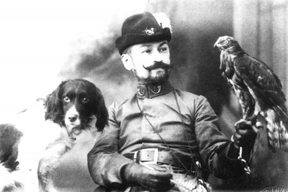- Home
- About Us
- UPCOMING LITTERS
- HHK Females
-
HHK Males
- VC Cody vom Apfelbaumbach
- VC Hunting Hills' Hemlock
- Hunting Hills' Blood Ty
- Robingun's Skeets Three Oh
- Hunting Hills' Quick Shooter
- Charly von der Emsaue (Ka$h)
- Hunting Hills Rocky
- Hunting Hills' Epic Creed
- LaCaccia’s B Sergio
- Grasidingen's Manfred Jixerson (Ruger)
- Vito
- Anheuser von der Weidach
- Hunting Hills' Yeager Kayden
- VC Hunting Hills' Joker
- Jerry vom Buchenberg (Zip)
- SM Characteristics
- SM History
- HHK Breeding Philosophy
- Early Puppy Training
- NAVHDA
- SMCA
- HHK Facility
- Bill of Sale
- HHK Hunting Pictures
- HHK Training Pictures
The Development of the Small Munsterlander
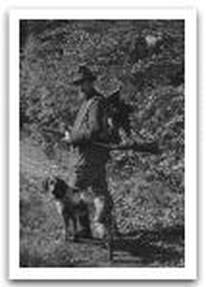
In the 17th century, German, Italian and Dutch artists included dogs that looked like our Small Munsterlanders in their artwork. However, the true origin of the dogs of that time is not exactly proved.
For several hundred years these small, handsome dogs had been the true companions of the hunters on the vast moors and bogs in the northwestern part of Germany, mainly in Westphalia. In 1840 when land reforms changed the viability of hunting as a trade, so Small Munsterlanders gradually lost their popularity, and it appeared that their extinction was inevitable. Only on remote farms on the moors did the farmers keep the line pure by keeping just one bitch for breeding and culling the rest of the females in the litters. There are reports saying that around 1870 long coated “Wachtelhunds“(German Spaniels) were well known in the Munsterland region. These dogs were firm or staunch in pointing; they had enormous scenting abilities and were also able to retrieve.
The Small (Kleine) Munsterlander was known in early days by a variety of names. Hermann Löns called them "heathland quail dog" or Heidewachtel. Some named them “The little Spy" or Spiönken after the characteristic fashion in which their small hunting dogs worked in the field. Many clergy and teachers owned the dog so they were soon nicknamed ‘Little Master’s Dog’ or Magisterhündlein. But when a club was formed in 1912 the Small Munsterlander name was chosen.
For several hundred years these small, handsome dogs had been the true companions of the hunters on the vast moors and bogs in the northwestern part of Germany, mainly in Westphalia. In 1840 when land reforms changed the viability of hunting as a trade, so Small Munsterlanders gradually lost their popularity, and it appeared that their extinction was inevitable. Only on remote farms on the moors did the farmers keep the line pure by keeping just one bitch for breeding and culling the rest of the females in the litters. There are reports saying that around 1870 long coated “Wachtelhunds“(German Spaniels) were well known in the Munsterland region. These dogs were firm or staunch in pointing; they had enormous scenting abilities and were also able to retrieve.
The Small (Kleine) Munsterlander was known in early days by a variety of names. Hermann Löns called them "heathland quail dog" or Heidewachtel. Some named them “The little Spy" or Spiönken after the characteristic fashion in which their small hunting dogs worked in the field. Many clergy and teachers owned the dog so they were soon nicknamed ‘Little Master’s Dog’ or Magisterhündlein. But when a club was formed in 1912 the Small Munsterlander name was chosen.
Small Munsterlander Early Days
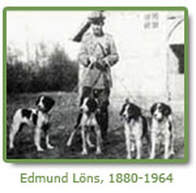
The Small Munsterlander is a long haired versatile dog that maintains the strong hunting qualities that were found in them in the early 1900’s. Rudolf Löns described the Small Munsterlander in the following way:
"The little dog takes up the staunchest, intense point when encountering all game holding tight, keeping the point until the hunter arrives - then the game is flushed, the dead game is fetched, the crippled downers tracked, and securely retrieved with the utmost skill".
He also said:
“It was also characteristic that the farmers had the dogs around them in the house, which was not usual at that time. It may well have been because the farmers had realized that not only was it comforting to them to have the handsome, small dogs indoors, but they also showed much better performance as hunting companions because of the continuous dog-human relationship that developed in the house.”
"The little dog takes up the staunchest, intense point when encountering all game holding tight, keeping the point until the hunter arrives - then the game is flushed, the dead game is fetched, the crippled downers tracked, and securely retrieved with the utmost skill".
He also said:
“It was also characteristic that the farmers had the dogs around them in the house, which was not usual at that time. It may well have been because the farmers had realized that not only was it comforting to them to have the handsome, small dogs indoors, but they also showed much better performance as hunting companions because of the continuous dog-human relationship that developed in the house.”
Clemens Heitmann
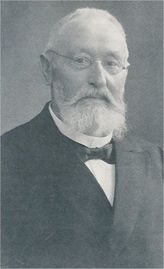
n 1906 the well known heath poet Hermann Löns placed a public appeal into the magazine “Unser Wachtelhund” (Our Hunting Dog) to give him a report on the still existing specimens of the red Hanovarian Heath Hound or Hannover Bracke. However, instead of that he and his brothers, Edmund and Rudolf Löns, discovered a pointing Wachtelhund on the farms, that they called “Heidewachtel “(heath quail dog) on the farms of Lower Saxony. They proceeded together to look for a basis for a breed.
During his years as a graduate in forestry, Edmund Löns discovered some of these small bird-dogs at teacher Clemens Heitmann's in Burgsteinfurt. For 40 years Heitmann had been breeding the same line, and was able to trace it as a purebred for another 70 years back.Heitmann acquired his first Small Muensterlaender bitch in 1877. When time came for a replacement dog he had his bitches mated, but only with sires whose excellent hunting capabilities he had personally witnessed during hunts.
Heitmann was one of the first breeders to start seriously thorough breeding the line of SMs that was later to bear his name. They were lightly built, rather leggy dogs with excellent hunting qualities, dapper and easily handled, and very social. Shoulder height was 40-50 centimeters, and they bayed when tracking. He had bought his first dog, named ‘Flora’, from August Hessling, innkeeper in Leer, who had been breeding these dogs since 1850.
During his years as a graduate in forestry, Edmund Löns discovered some of these small bird-dogs at teacher Clemens Heitmann's in Burgsteinfurt. For 40 years Heitmann had been breeding the same line, and was able to trace it as a purebred for another 70 years back.Heitmann acquired his first Small Muensterlaender bitch in 1877. When time came for a replacement dog he had his bitches mated, but only with sires whose excellent hunting capabilities he had personally witnessed during hunts.
Heitmann was one of the first breeders to start seriously thorough breeding the line of SMs that was later to bear his name. They were lightly built, rather leggy dogs with excellent hunting qualities, dapper and easily handled, and very social. Shoulder height was 40-50 centimeters, and they bayed when tracking. He had bought his first dog, named ‘Flora’, from August Hessling, innkeeper in Leer, who had been breeding these dogs since 1850.
The Dorsten Line
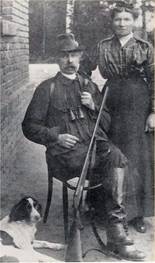
In 1911 Löns discovered another breed family, the so-called "Dorstener Schlag", which was bred near Velen, Reeken and Coesfeld. The Dorsten line was an excellent looking dog with a great chest, front legs and shoulders. The back was a little longer and the height was slightly taller than the Heitmann dogs often above 50 cm. The mouth was straight with tight lips and appeared a little more pointed. They had beautiful brown eyes, well-formed ears, a good coat, a beautiful tail with feathers, was an excellent expressive bird dog and they had in opposition to the Heitmann dogs a distinct forehead stop.
So, Heitmann's stock was soon augmented by gamekeeper Wolberg's in Dorsten-Hervest. This line could be traced back to the 1860s without a break. One of the ancestors was named "Caro"
In 1907, Wolberg had acquired three dogs, one male and two bitches, from watchmaker Heinrich Brüning in Tungloh. He kept two of these dogs, 'Rino Hervest 36' og 'Mirzel I Hervest 37', which were siblings out of a mating between another pair of siblings, 'Caro' og Polly'.
Breed Standard
|
By 1921, Edmund Löns and Dr. Friedrich Jungklaus had formulated and published the breed characteristics of the Kleine Münsterländer, which were the basis for the further development of the breed. The breed characteristics and the performance requirements were not determined by the association until 1936, however, and then codified for a longer period of time.
|
Location |
|
